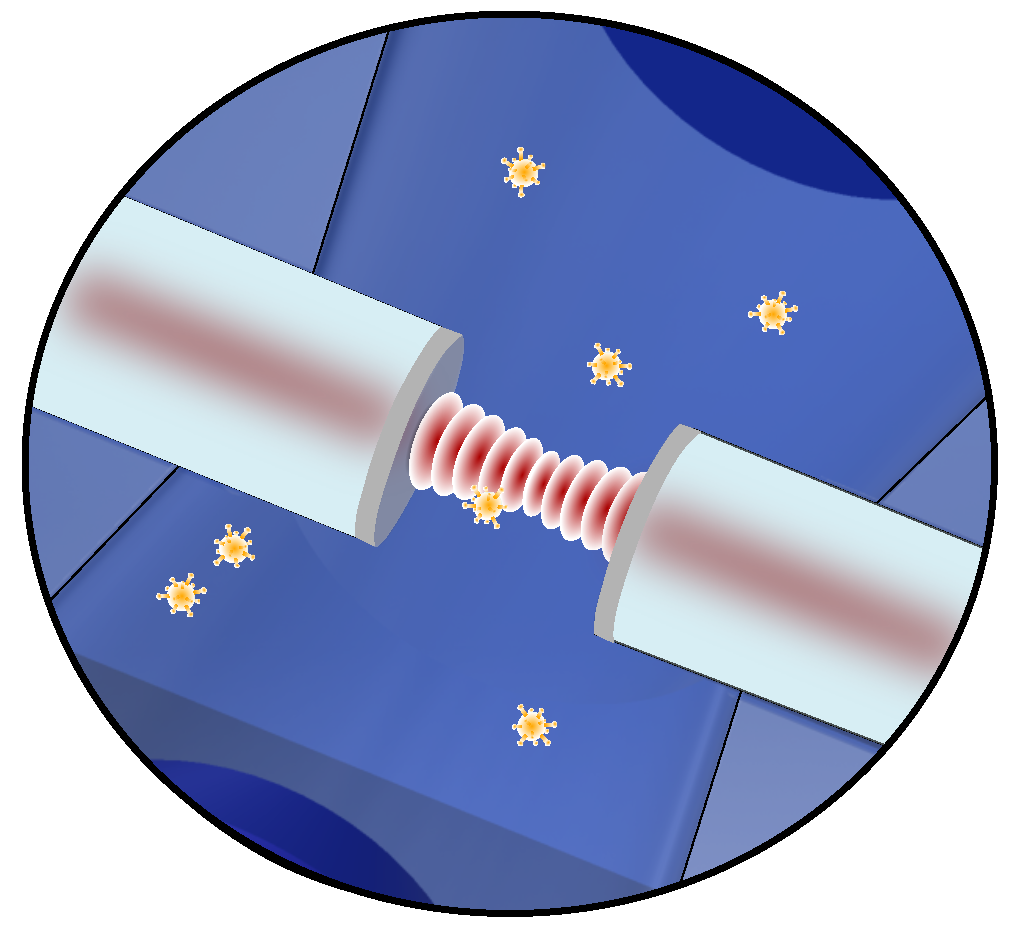Cavity-enhanced sensing platform in a microfluidic cell
 The detection and characterization of individual non-fluorescent nanosystems with high temporal resolution could provide new insights into their intrinsic properties and dynamics. To achieve the high sensitivity required for studying individual unlabelled nanosystems in solution, we use signal enhancement in a fiber-based Fabry-Perot microcavity with high finesse (F~105 ), which is integrated into a microfluidic channel. The presence and dynamics of a nanoobject in the tight focus of the cavity mode (w0 ~1μm) can be detected via the induced frequency shift and decrease of amplitude of the resonant cavity transmission signal, resulting from the excess polarizability of the object. For smaller nanoobjects, the sensitivity can be increased by the active stabilization of the cavity length and the interferometric measurement of the phase shift induced by the nanoparticle (homodyne detection). Shifting the signal to a higher frequency (heterodyne detection) leads to a further increase of the sensitivity.
The detection and characterization of individual non-fluorescent nanosystems with high temporal resolution could provide new insights into their intrinsic properties and dynamics. To achieve the high sensitivity required for studying individual unlabelled nanosystems in solution, we use signal enhancement in a fiber-based Fabry-Perot microcavity with high finesse (F~105 ), which is integrated into a microfluidic channel. The presence and dynamics of a nanoobject in the tight focus of the cavity mode (w0 ~1μm) can be detected via the induced frequency shift and decrease of amplitude of the resonant cavity transmission signal, resulting from the excess polarizability of the object. For smaller nanoobjects, the sensitivity can be increased by the active stabilization of the cavity length and the interferometric measurement of the phase shift induced by the nanoparticle (homodyne detection). Shifting the signal to a higher frequency (heterodyne detection) leads to a further increase of the sensitivity.
 Besides the determination of the size and the refractive index of the nannoobject, also their position can be tracked by changing the cavity length at high frequency and measuring the resonance frequency and linewidth of several transverse modes of the cavity. Due to the different radial shape of cavity transverse modes, this yields information about the spatial position of the nanoobjects, allowing us to track the position with high temporal resolution. [Kohler et al., Nature Commun. (2021)]
Besides the determination of the size and the refractive index of the nannoobject, also their position can be tracked by changing the cavity length at high frequency and measuring the resonance frequency and linewidth of several transverse modes of the cavity. Due to the different radial shape of cavity transverse modes, this yields information about the spatial position of the nanoobjects, allowing us to track the position with high temporal resolution. [Kohler et al., Nature Commun. (2021)]

